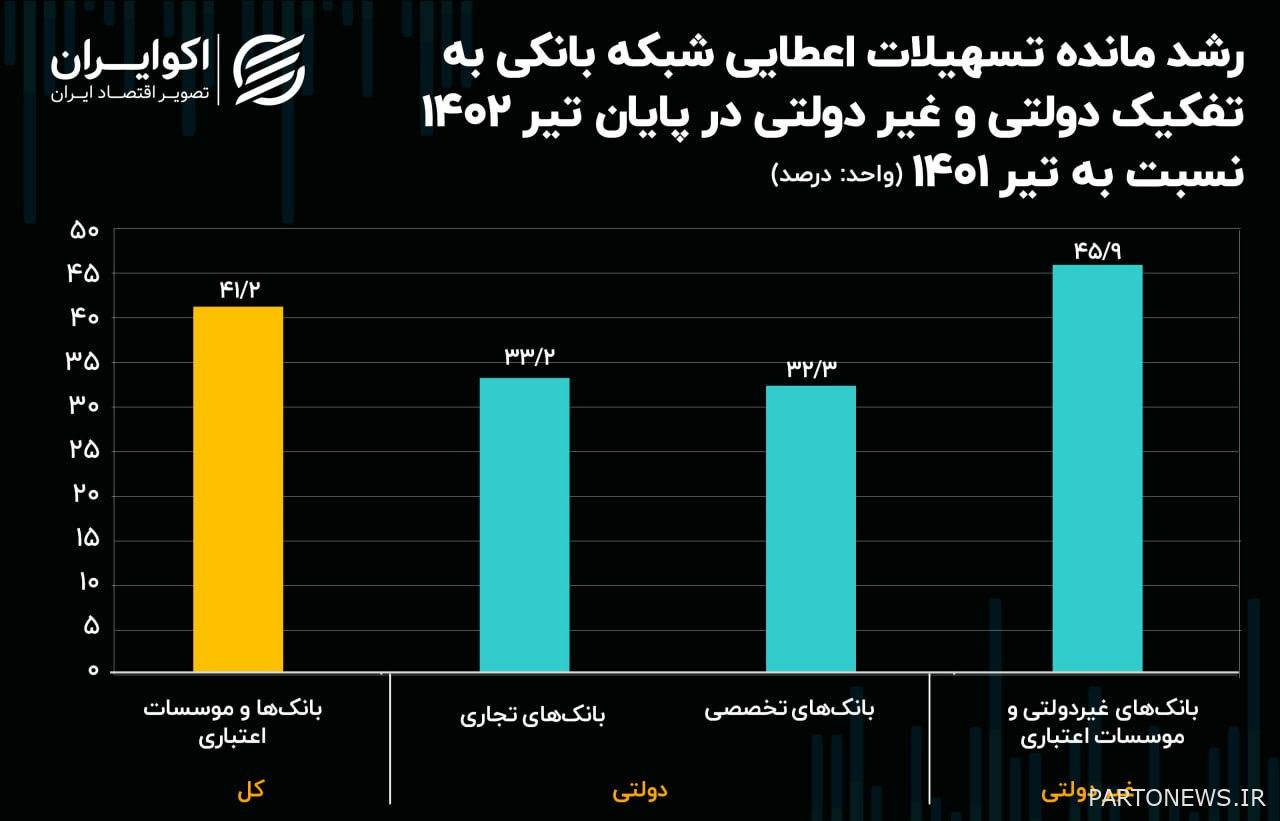Withdrawal of state banks from loan payments

The share of state-owned banks (commercial and specialized) in the balance of facilities granted by the banking system at the end of July last year was equal to 35.8%, while this share has decreased to 33.7% at the end of July this year.
The latest report of the Central Bank of monetary variables related to July this year shows that the balance of the facilities granted by banks and credit institutions at the end of this month reached 5 thousand 315 hemats, which has grown by 41.2% compared to July last year.
Non-governmental organizations are pioneers in loan payments
The share of non-government banks is more than that of state-owned banks, so that the share of state-owned banks is 33.7% and the share of non-state-owned banks is equal to 66.3%.
State banks are divided into commercial and specialized sectors, and among the state banks, the share of commercial banks in payment of loans is more than that of specialized banks.
The balance of facilities granted by state banks until the end of July this year was 1,791 hemats, of which the share of commercial banks was equal to 48,000 hemats and the share of specialized banks was 742 hemats.
Examining the share of banks in the balance of payment facilities shows that the share of state banks has decreased at the end of July this year compared to July last year.
The share of state-owned banks (commercial and specialized) in the balance of facilities granted by the banking system at the end of July last year was equal to 35.8%, while this share has decreased to 33.7% at the end of July this year.
The decrease in the share of state banks from the balance of granted facilities during the mentioned time period has been more in commercial banks than in specialized banks.
On the other hand, the share of non-governmental banks (private and privatized) in the balance of the facilities granted by the country’s banking system at the end of July this year compared to the end of July last year increased from 3.1 percentage points and reached 66.3%.
The examined changes also apply to the growth of loan balances, and non-government banks have faced the growth of loan balances more than government banks.
At the end of July this year, the balance of the facilities provided by the banking network has increased by a total of 41.2% compared to last year, while the growth rate in private banks was about 46% and in state banks was about 33%.

The reason for the diminution of the government’s role in lending
Obligatory facilities such as marriage, childbearing and housing loans that the government has imposed on the banking system since last year, and on the other hand, the lack of resources, imbalances and losses in most state-owned banks can reduce its share of the balance of facilities granted by the banking network.
According to some experts, due to financial and budgetary reasons, the government was not able to allocate sufficient resources to state banks to pay debt facilities, and this restriction led to a forced increase in the involvement of non-government banks in providing facilities and, as a result, an increase in their share of the balance of facilities granted by the system. It has been banked.

